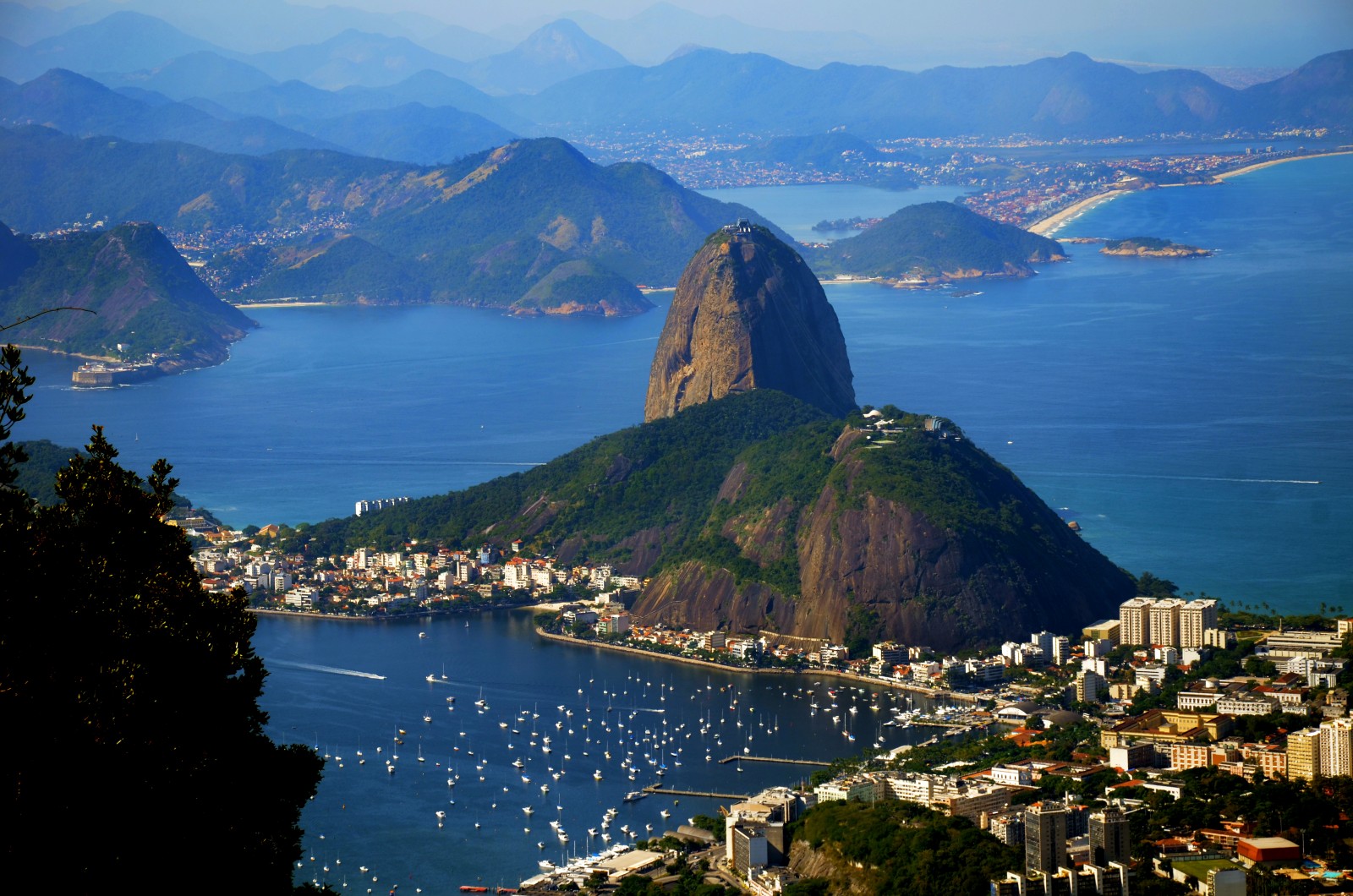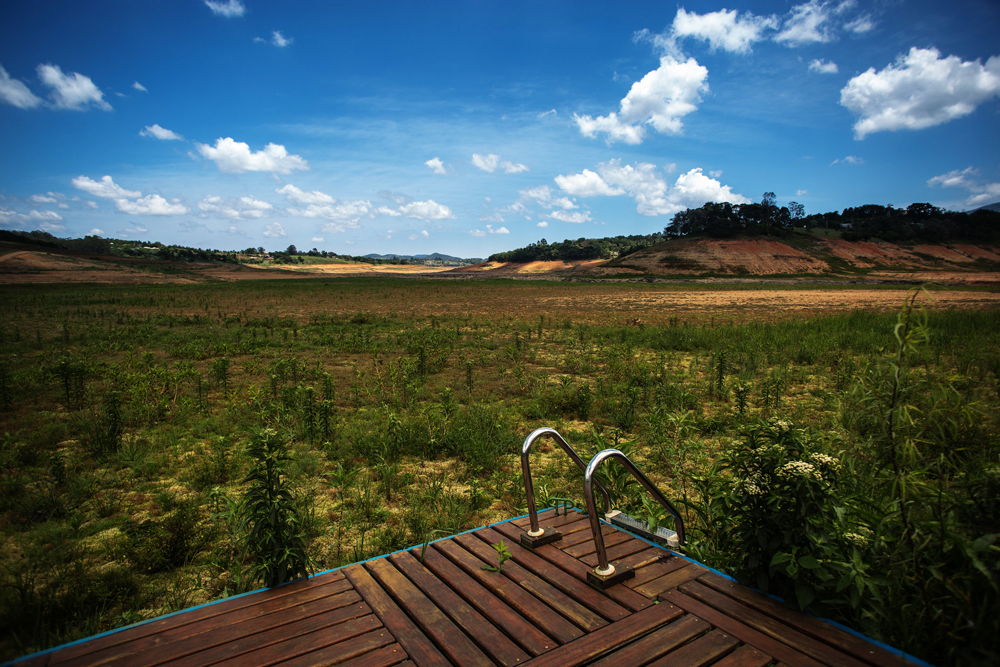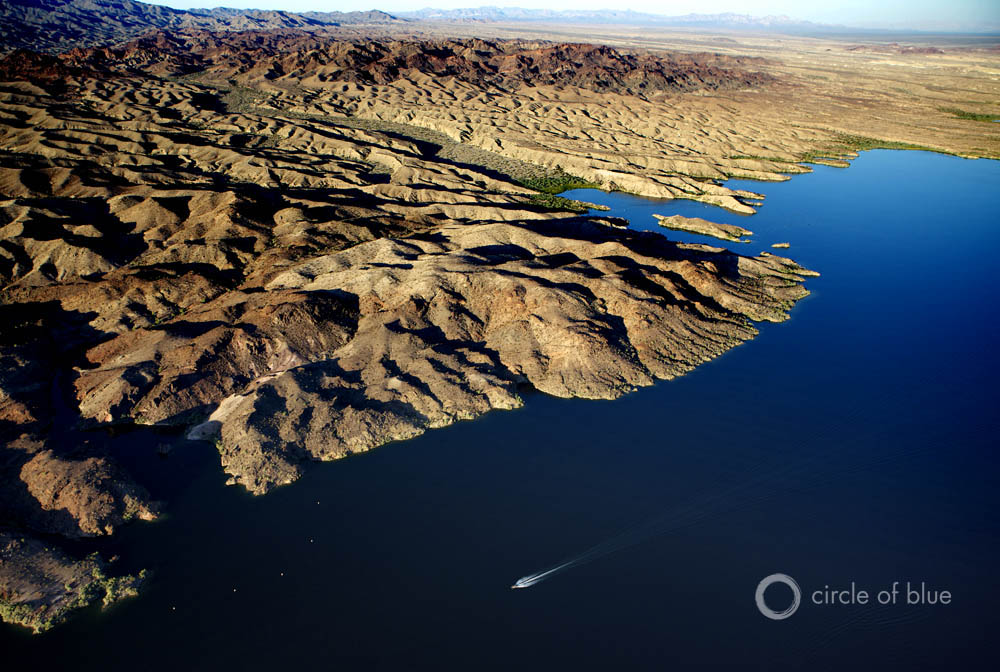For Brazil, Rio Sewage is One of Many Water Challenges
Hydropower development, agricultural expansion, mining, and drought put growing pressure on Olympic host.

Rio de Janeiro’s iconic Guanabara Bay has also become a global symbol of polluted urban waterways during the 2016 Olympic Games. Photo courtesy Rodrigo Soldon 2 via Flickr Creative Commons
By Codi Kozacek
Circle of Blue
With the 2016 Summer Olympic Games well underway in Rio de Janeiro, the contamination of the city’s waterways with raw sewage has earned the international sporting event the vivid, if ungracious, epithet “Poop Olympics”.
The condition of Guanabara Bay, the site of Olympic sailing events, and other waterways in Rio is certainly deplorable. A study released by the Associated Press this month found high levels of adenovirus at Gloria Marina, on the bay’s western shore, and at Rodrigo de Freitas Lagoon, an inland lake that hosts the rowing competitions. Nearly 90 percent of the sites tested over a 16-month period registered infectious strains of the virus, which can cause diarrhea and respiratory problems.
The World Health Organization noted that some areas failed to meet Brazilian water quality standards and would be classified as “poor” or “very poor” under WHO guidelines.
The World Health Organization, using bacterial indicators rather than viruses, concluded that the water was still acceptable for recreation. However, it also noted that some areas failed to meet Brazilian water quality standards and would be classified as “poor” or “very poor” under WHO guidelines. As a result, the agency recommended that athletes and visitors “cover cuts and grazes with waterproof plasters prior to exposure, try to avoid swallowing the water, wash/shower as soon as possible after exposure and, as far as possible, minimize their time in the water and avoid going in the water after heavy rainfall if possible.”
As many news stories have pointed out over the past year, the water that so horrifies Olympic attendees is a daily menace to the 12 million people who call Rio home. Only about half of Rio’s wastewater is treated, despite the city’s promise to treat 80 percent of its sewage before the Olympic Games. Officials at Cedae, the city’s water utility, insist they have made significant progress toward that goal, pointing out that in 2007 only 11 percent of Rio’s sewage went through treatment plants. But the utility is under investigation for fraud, and a former employee told Bloomberg in April that the real treatment numbers may be between 20 and 30 percent. Adequate sanitation access is also lacking in many of the city’s poorest neighborhoods, known as favelas.
Water Supply Also At Risk
Yet the challenges in Rio do not occur in a vacuum. Other Brazilian cities, most notably the megalopolis of São Paulo, the ninth largest city in the world, have their own share of water quality problems. São Paulo’s Billings reservoir, for example, is considered far too polluted to use for public water supplies. The reservoir’s dismal condition compounded the agony of a two-year drought that diminished water supplies in São Paulo’s primary water system, Cantareira, to dangerously low levels. At the drought’s most critical juncture last year, officials were forced to contemplate the once unthinkable prospect of the Cantareira system running dry, a scenario that would have left nearly half of the metropolitan region’s 20 million residents without water.
Managing water supply could actually be one of the toughest challenges for Brazil to overcome, despite its claim to the world’s largest reserves of fresh water.
Water quality is one part of the paradox. Like in China, where rapid industrial and agricultural development has created pollution-induced water scarcity, a lack of clean water in Brazil could create or exacerbate shortages. The Sao Paulo drought highlighted the risk of this type of scarcity. So too did a tailings dam failure at an iron ore mine in Minas Gerais last November. The incident killed 19 people and spilled 32 million cubic meters of sludge that spread more than 400 kilometers (248 miles) along the Rio Doce. Drinking water intakes along the river were temporarily cut off, and scientists expect it could take years for the river system to recover.

Water levels in Sao Paulo’s Cantareira Reservoir system, shown here in November 2014, sank dangerously low during a two-year drought. Pollution in the city’s other reservoirs compounded the problem. Photo courtesy Ninja Midia via Flickr Creative Commons
Another concern is growing competition for water, particularly between hydropower production and agriculture. Brazil relies on hydropower for more than three-quarters of its electricity, and plans to add 3.3 gigawatts of hydropower capacity — equivalent to one and a half Hoover Dams — each year between 2014 and 2023. Over the past decade, Brazil has also become the world’s largest exporter of soybeans and the second-largest exporter of corn, rivaling the United States. As agriculture expands further into the interior of Brazil’s forests, farmers are calling for the development of riverine transportation networks to avoid moving their crops via trucks, which are expensive and slow. The plans have been impeded, however, by the construction of dams that lack navigation locks.
The dismal condition of Sao Paulo’s Billings reservoir compounded the agony of a two-year drought that diminished water supplies in the city’s primary water system.
The expansion of agriculture and Brazil’s heavy reliance on hydropower also complicate water relations between cities like Sao Paulo and Rio de Janeiro. The cities share the Paraiba do Sul River Basin, and became tangled in a legal dispute in 2014 during Sao Paulo’s drought. Officials in Rio claimed that Sao Paulo violated national water and energy plans when it tried to withhold water that feeds into the Paraiba do Sul, which supplies Rio with drinking water and hydropower. Sao Paulo later released the correct amount of water downstream following an order from Brazil’s National Electric System Operator. Scientists suggest severe droughts like the one Sao Paulo experienced over the past two years could become more frequent, in part due to deforestation in the Amazon. Deforestation, in turn, has been linked to agriculture.
As Rio’s experience with water quality highlights, it will take a significant financial and political investment for Brazil to address this complex tangle of competing water demands and pollution. That could be difficult under current economic conditions. Brazil’s economy, which grew more than 3 percent each year for much of the past decade, plummeted over the past year. Gross domestic product contracted 3.8 percent in 2015 and is expected to decline 3.3 percent this year. Political scandals have added to the financial turmoil. In May, Dilma Rousseff, Brazil’s president, was suspended on charges of corruption. Her impeachment trials follow an extensive corruption scandal at Petrobras, Brazil’s state-owned oil company, during which 179 people were charged with crimes.
A news correspondent for Circle of Blue based out of Hawaii. She writes The Stream, Circle of Blue’s daily digest of international water news trends. Her interests include food security, ecology and the Great Lakes.
Contact Codi Kozacek











